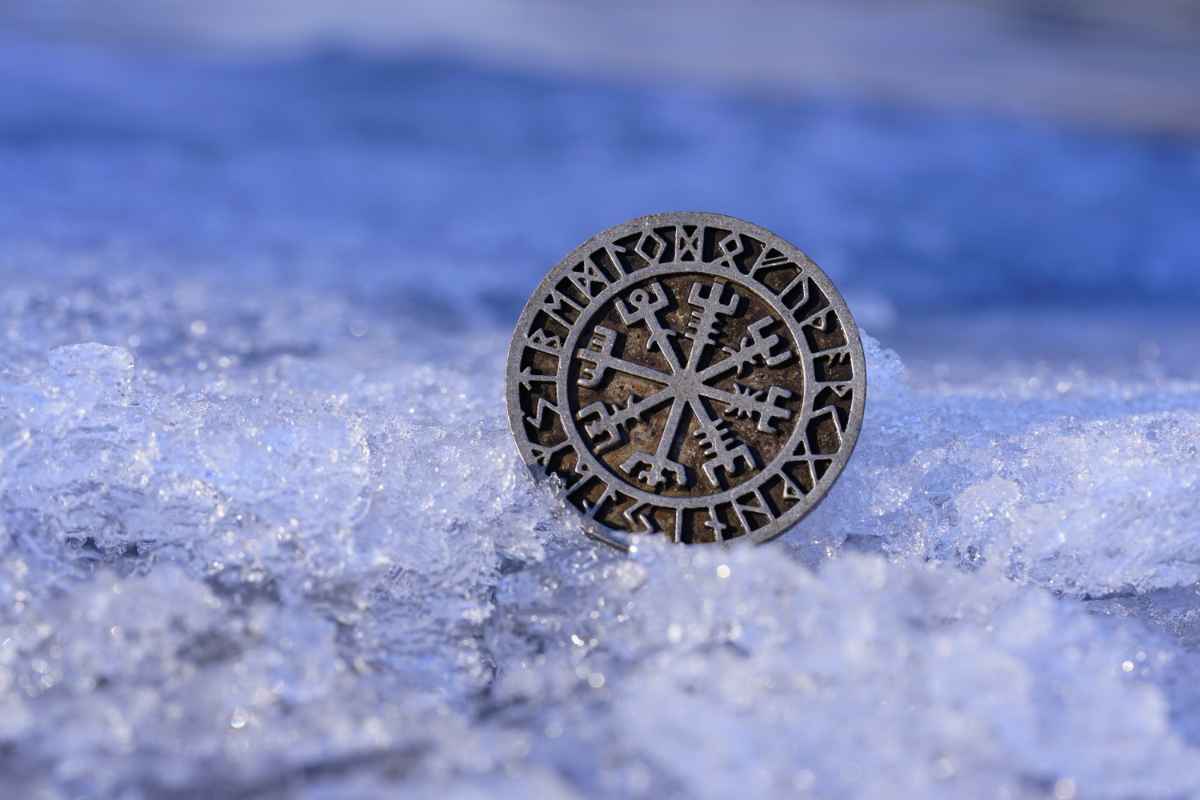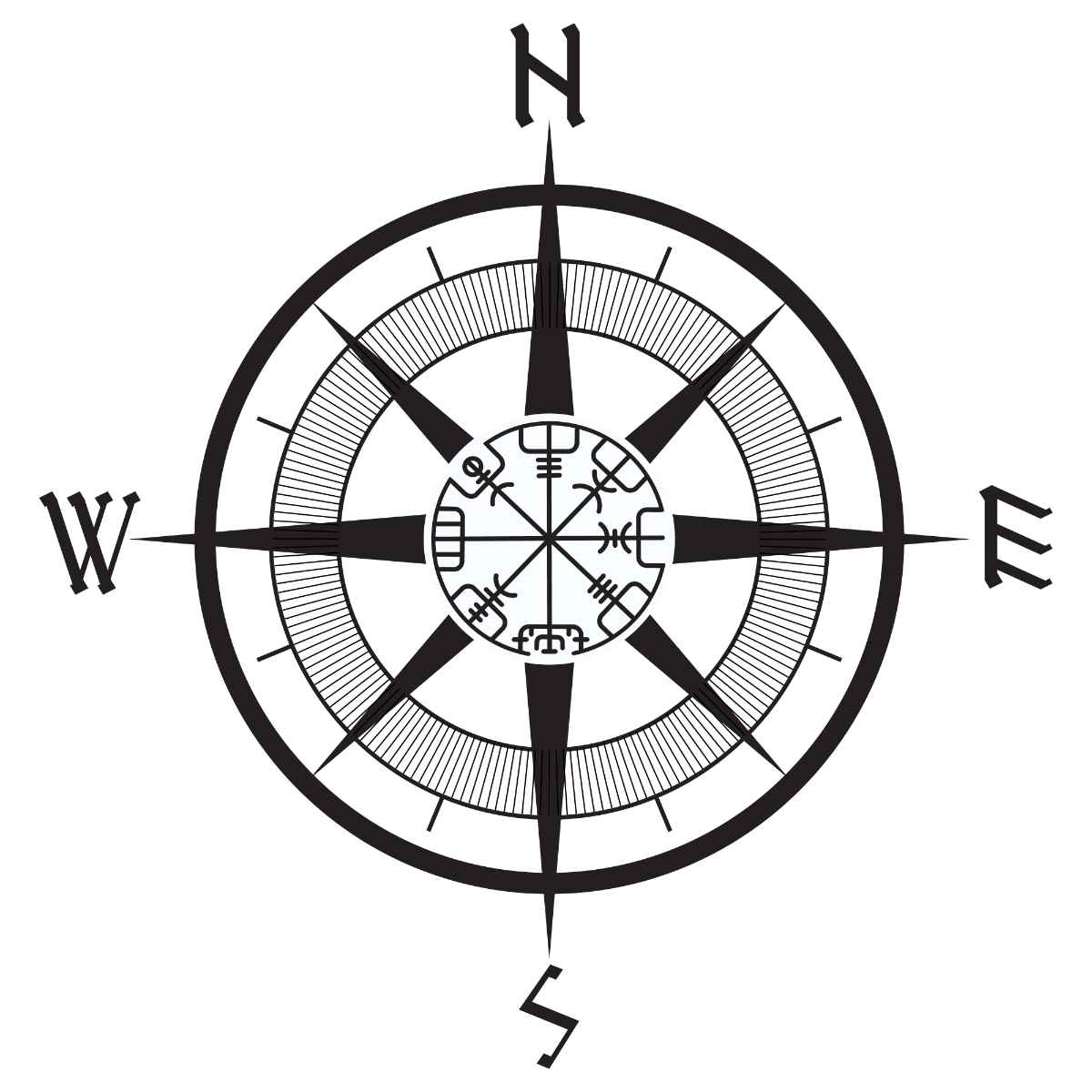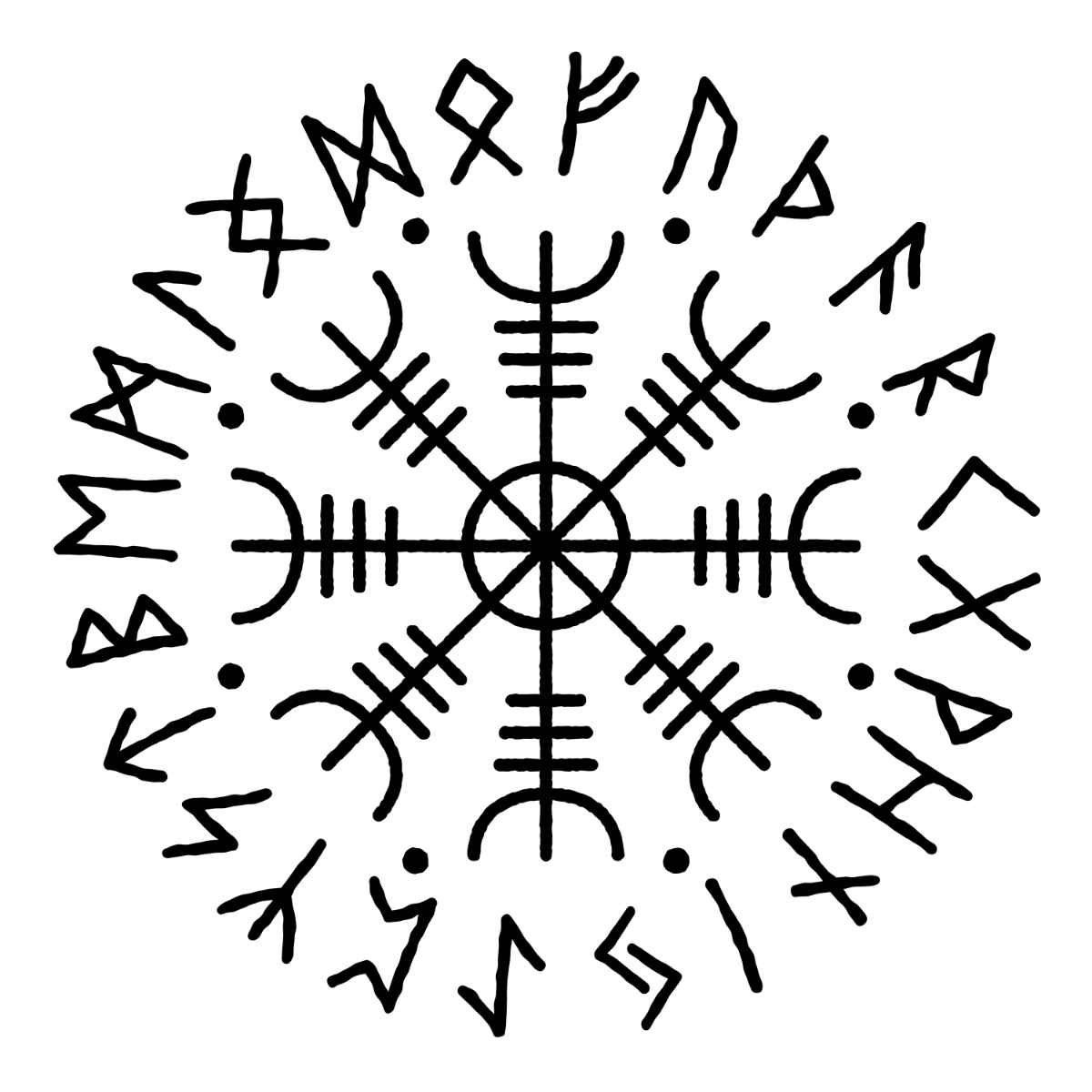The Vikings are known for their mythology. Symbols used for are intertwined with magical elements from their Nordic beliefs. But is the Vegvisir Viking Compass really a good example of this?
In this article, we dive into this Nordic compass and the Vegvisir’s meaning. And why we should still appreciate this “runic” compass for its interesting history and philosophy today.
What is the Vegvisir Norse Compass?
The Vegvisir, often termed the Viking compass, is an old Norse symbol comprising eight runes branching from a central point. Surrounding the Vegvisir, several runes from the Norse alphabet can appear, connecting the human realm to the divine through rune stones.
The Vegvisir Compass is also known as the Nordic compass, the runic compass, the Odin compass, and the Viking compass. It was not a literal compass, but a symbol used to prevent you from losing your way. And although we no longer hand these to boat captains for good luck on their journeys, the symbol still holds a pretty powerful philosophy. So one can still find it on people in the form of a tattoo, the jewelry they wear, and even video games such as Valheim.
The Vegvisir consists of eight points (similar to the look of a clock or a compass) with each point having a unique design. It is one of many Icelandic magical staves, or galdrastafir, which were supposedly used to channel magic in specific ways.
As it is a symbol, renting a car in Reykjavík is not going to help you very much when it comes to seeing the Vegvisir Viking Compass.

What is the Meaning of the Viking Compass?
This word translates to ‘sign post’ or ‘way finder’. The word Vegvisir is pronounced “VEGG-vee-seer”, The “g” is a hard “g”. It itself means something like “way finder”; it is Vegr (way) and Visir (shower). It is an eight-pointed shape, with each point having a unique design. The "vegvísir" or "Viking Compass" aids navigation, ensuring one doesn't lose their way. A symbol usually seen in tattoos, jewelry, and games like Valheim.
Runes around the Vegvisir vary; they might be the Runic alphabet or the phrase "not all who wander are lost". No definitive design exists, as the original design didn't have any text. Except for the aim or symbolism behind the Vegvisir, the interesting reality regarding the Viking compass is that it actually has little to do with the Vikings at all. The first mention of it was in the Huld Manuscript along with other magical staves.
The Huld Manuscript was written in 1860 in Iceland by Geir Vigfusson and specifically stated. “Beri maður stafi þessa á sér villist maður ekki í hríðum né vondu veðri þó ókunnugur sá”. When translated, this means: “Carry this sign with you and you won't get lost in storms or bad weather, even in unfamiliar surroundings”.
Although we like to associate anything magical that comes from Iceland with Vikings in our minds, it would be ridiculous to do so. To give you an idea, the Viking Age was between 793 – 1066.
Associating the Vegvisir of the 1800s with the Vikings would be like associating the steam locomotive with the Vikings. So, if you’re going on one of the Viking tours in Iceland, you won’t be seeing the Vegvisir anywhere in a Viking house in Iceland. So, if you’re going on one of the Viking tours in Iceland, you won’t be seeing the Vegvisir anywhere in a Viking house in Iceland.
The confusion seems to come from the design of the Viking compass symbol itself. This may explain why it is mistakenly called a runic compass.
The sigils used in these Icelandic pentagrams mentioned in the Huld Manuscript use many straight lines. These are similar to those found in the Viking runes that formed the Old Norse alphabet. When these straight lines are used together, it looks even more like runes, even though none of them actually represent words or even letters.

The vegvisir and the interest in the slim Viking
Another reason why the Viking symbol of Vegvisir was attributed to the Vikings, was because of a trend. Yes, even in the 1800s we were governed by the coming and goings of what’s “in”. The 1800s saw a renewed interest and increase in popularity of all things Nordic and Viking. We now refer to this period as the Viking Revival.
This revival stretched as near and far as the Nordic regions, Germany, the UK, and the US. Now, bring out a manuscript full of staves that look very similar to runes, and you can imagine what will happen.
Other Icelandic Staves
The Icelanders had many different staffs and symbols that were believed to channel magic. Whether it was for protection, strength or advantage in the sport of wrestling. Some of these other staves include:
- Thjofastafur (for protection against thieves)
- Vatnahlifir (for protection against drowning)
- Gapaldur & Ginfax (these two must be used together and serves to assure victory in a wrestling match)
- Aegishjalmur (to protect warriors in battle)
The Vegvisir vs. Aegishjalmur
We need to go into a bit more detail here, as the Aegishjalmur and the Vegvisir are often confused with each other. Firstly, these two might look similar, but there are notable differences. Even though the Aegishjalmur also has eight points, they are all identical (unlike the Vegvisir which has a unique design at each point).
The Aegishjalmur also has a circle in the center of its design. Secondly, except for the physical differences, it also carries an entirely different meaning. Aegishjalmur, pronounced “EYE-gis-hiowlm-er” in the Iceland language, is also known as the Helm of Awe (a name very fitting to what it was used for). It was drawn onto the forehead to protect the warrior who wears it and strike fear into the enemy.

In the Poetic Edda, composed and compiled by Snorri Sturluson, the Helm of Awe was worn by the dragon Fafnir. The dragon attributed his success in guarding his treasure hoard to his wearing of the Helm of Awe. The poem states:
The Helm of Awe
I wore before the sons of men
In defense of my treasure;
Amongst all, I alone was strong,
I thought to myself,
For I found no power a match for my own.
As it happens, the warrior Sigurd slew Fafnir and took Ægishjálmur, presumably a physical object, for himself.
Vegvisir: A Cultural Piece of Art & Precious Life Lesson
Even though the Viking Compass may not actually have anything to do with the Vikings, it still has historic and cultural value. If not about the Viking warriors who set sail on the Viking ship Islendingur, then about the Icelanders and their beliefs. As well as about the enormous role that fashions have played in the human psyche for centuries.
And although the Vegvisir can also be appreciated as a beautiful piece of art, it’s “not just a pretty face”. It symbolizes a valuable lesson. We can all use some reminding not to lose ourselves or our way on this exciting journey we call life.


 By
By


